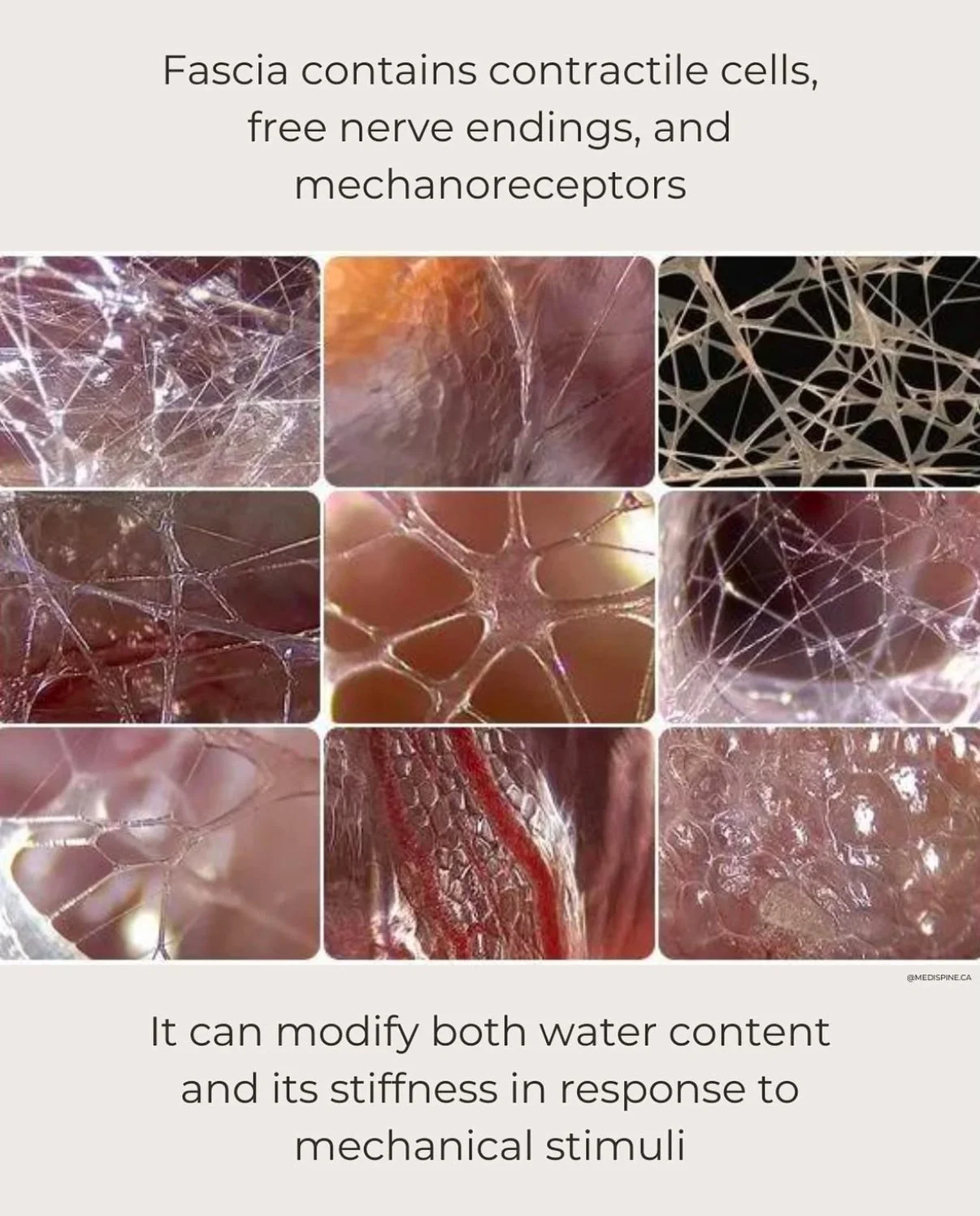Yin Yoga & The Science of the Rebound
The Effect of the Rebound in Yin Yoga on Fascia and Joints
The practice of rebound in yin yoga is where you pause after and rest after releasing a pose and allow the physical and energetic and mental recallibration of your being to take place. It is observed as a critical phase for integration and re-alignment . Here’s some of the science on how it specifically impacts the fascia and joints:
Fascia:
Fluid Redistribution:
Image via @medispine.ca
During a pose, compression and stretch push interstitial fluid (the fluid within the fascia) out of the compressed areas as you ‘stress’ an area ( the technical term for yin tissue is called stressing tissue rather than stretching tissue)
The rebound allows fresh fluid to flow back into the fascial structures rehydrating and nourishing the tissue - like a sponge soaking up fresh water after it was squeezed. This process restores suppleness to the fascia and prevents adhesions and knots.
Tissue Reorganisation:
Fascia responds to the mechanical load of yin yoga by realigning collagen fibers ( I like to think of this like combing knots out of your hair so instead of being knotted together in some spots the strands are re-organised in a sleek more functional alignment.)
In the rebound, the body integrates these changes in tissue structure, allowing the newly aligned tissue to reorganise and settle into a more functional and flexible state.
Nervous System Reset:
Fascia contains many sensory nerves. The rebound provides a moment of stillness for the nervous system to process and adapt to the changes initiated during the pose.
This enhances proprioception and interception (external body awareness & internal body awareness) and helps calm and tone the nervous system, guiding it to down regulate into states of rest and restoration.
Joints:
Joint Membranes and Synovial Fluid Production
Synovial joints (e.g., knees, hips, and shoulders) are encapsulated by a membrane called the synovial membrane. This membrane secretes synovial fluid, a viscous substance that lubricates joint surfaces, reduces friction, and nourishes the cartilage.
After sustained compression in a pose, the rebound phase allows synovial fluid to be drawn back into the joint space.
This fluid nourishes the cartilage, lubricates joint surfaces, and improves joint mobility, ensuring the health and longevity of your joints.
Yin yoga’s long-held, gentle poses create a unique environment for joint care by applying compression and tension to the tissues around the joint. This stimulates the synovial membrane in several ways:
1. Compression Stimulates the Synovial Membrane
When a yin pose compresses a joint (e.g., Child’s Pose compressing the knees or Dragon Pose compressing the hips), it gently presses the synovial membrane.
This mechanical stimulation activates synoviocytes (specialized cells in the membrane), which increase the production of synovial fluid.
The compression also encourages the movement of existing fluid out of the joint, creating space for fresh fluid to flow in after the pose.
2. Fluid Exchange and Circulation
Stretch and Compression Cycle: During a pose, fascia and joint tissues are compressed and stretched, encouraging the exchange of fluids.
This cycle mimics a sponge-like action: Old fluid is "squeezed out" of the joint during compression. Then freshly produced synovial fluid rushes in during the release (rebound phase), rehydrating the joint.
3. Hydration of Cartilage
Cartilage within the joint does not have its own blood supply. It relies on synovial fluid to deliver nutrients and remove waste.
Yin yoga enhances this process by encouraging fluid flow, which maintains the health and elasticity of the cartilage.
4. Prolonged Holds Optimize Synovial Function
Synovial fluid viscosity improves with gentle, sustained movement or stillness under tension, as seen in yin poses.
The long holds of yin yoga give the synovial membrane adequate time to respond and secrete more fluid, promoting lubrication and smooth joint movement.
Decompression and Recovery:
Joints decompress, relieving the pressure that was applied during the pose. This phase prevents overstressing the joint and supports its return to a neutral, balanced state.
Nutrient Exchange:
The increased circulation during the rebound helps deliver nutrients and oxygen to the joint capsule and surrounding tissues, supporting long-term joint health.
Why the Rebound Matters
The rebound is a moment of stillness that allows the body to absorb the benefits of the pose. It’s where transformation occurs—fluid is redistributed, tension is released, and both fascia and joints begin their natural healing processes.
Tip for Teachers:
Encourage students to notice subtle sensations during the rebound, encourage them to welcome any thoughts, emotions, memories that surface as stored energy is cleared through the tissue/meridians. Encourage them to feel the difference between the two sides if the shapes was a-symetircal. This mindfulness helps them connect with the subtleties in their body and deepen their practice.
